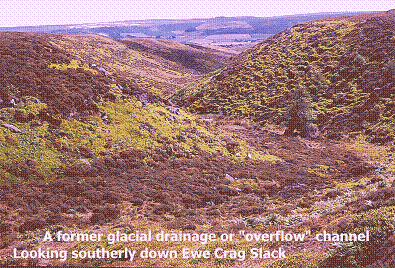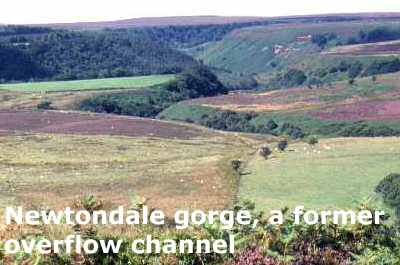The Effects of the Last Glaciation on the North York Moors
|
In 1902 Kendall published his monumental work "A System of Glacier
Lakes in the North York Moors." In it he explained how the existence of
lakes and glacial meltwater channels were the result of the moors being
completely surrounded by ice almost 1000ft. thick. The high moorlands (over
800ft.)were not invaded by icesheets
or glaciers and were not of sufficient height to generate their own icesheets or glaciers. |
|
||||||
|
|
Embayments between ice and higher ground as well as
valleys plugged by ice became filled with meltwater
from the glaciers and/or run off from the moors. Ice margins lying parallel
to the hillsides would produce marginal drainage channels. Sometimes the
overflow would come from the icefront itself after
having "squeezed out" the lake, e.g. the Bold Venture Channel.
There are localities which suggest that meltwater
found its way through the ice, leaving eskers, e.g. at Hob Cross. Belcher, a
traveller during the 19th. century described the
channels as "furrows on the aged cheek where tears have ceased to flow".
|
||||||
|
|
|


